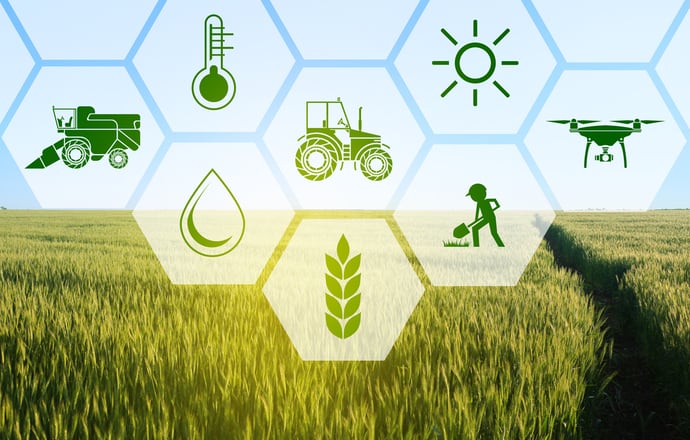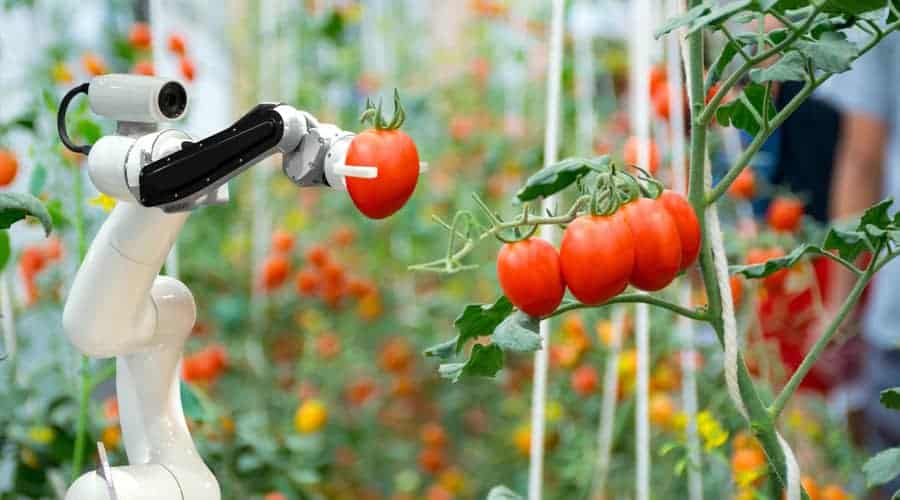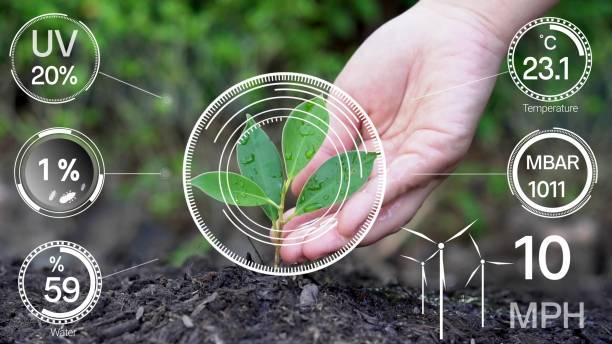Contents
- 1 How AI is Transforming the way we grow, harvest, and distribute food
- 2 By Aécio D’Silva, PhD(1), Fabiano Moura, MSc(2)
- 3 Artificial Intelligence and Precision Agriculture – AI in Agriculture
- 4 Artificial Intelligence and Precision Agriculture – Precision Agriculture
- 5 Benefits of AI and Precision Agriculture in Food Production
- 6 Challenges
How AI is Transforming the way we grow, harvest, and distribute food
By Aécio D’Silva, PhD(1), Fabiano Moura, MSc(2)
(1) Moura Enterprises, AquaUniversityTucson, AZ 85742, EUA; (2) Profound Commerce, Inc. Austin, TX 78746.
With the world population projected to reach 9.7 billion by 2050, the demand for food is set to increase by 60%. To meet this demand, the agriculture industry needs to produce more food with fewer resources. This is where the intersection of Artificial Intelligence (AI) and Precision Agriculture comes in.
Food production has come a long way from traditional farming practices to modern technologies that increase crop yields, reduce waste, and improve food quality. Artificial Intelligence (AI) is one such technology transforming the agriculture industry. AI involves the use of computer algorithms and machine learning to analyze data and make predictions based on that data. Precision Agriculture, on the other hand, involves the use of sensors, data analytics, and other technologies to optimize crop yields and minimize resource use.
Artificial Intelligence and Precision Agriculture – AI in Agriculture
AI is transforming how we grow crops by providing farmers with insights into crop health, yield potential, and resource use. With AI-powered sensors and imaging technology, farmers can analyze data in real-time and make decisions that improve crop yields. AI also helps farmers predict crop diseases, pests, and other environmental factors that affect crop growth. This helps farmers take preventive measures to minimize crop damage.
Artificial Intelligence and Precision Agriculture – Precision Agriculture
Precision Agriculture is a farming practice that uses data analytics and technology to optimize crop yields, reduce waste, and minimize resource use. This practice involves the use of sensors and other monitoring devices to collect data on soil moisture, nutrient levels, and weather conditions. This data is then analyzed using AI algorithms to generate insights into crop growth and development. Precision Agriculture also involves the use of precision planting and harvesting equipment that reduces soil erosion, minimizes fertilizer use, and improves crop yields.
Benefits of AI and Precision Agriculture in Food Production
The benefits of AI and Precision Agriculture in food production are numerous. First and foremost, these technologies improve crop yields by providing farmers with real-time data on crop health, nutrient levels, and environmental factors. This helps farmers make informed decisions that optimize crop growth and development. Secondly, AI and Precision Agriculture help reduce waste by minimizing resource use and improving the accuracy of crop forecasting. Lastly, these technologies improve food quality by ensuring that crops are grown under optimal conditions.
Challenges
Despite the numerous benefits of AI and Precision Agriculture, there are also challenges that need to be addressed. One of the main challenges is the cost of implementing these technologies. Many farmers may not have the financial resources to invest in these technologies, which may limit their adoption. Another challenge is farmers’ lack of knowledge and skills to use these technologies effectively.
In conclusion, the intersection of Artificial Intelligence and Precision Agriculture is transforming the agriculture industry by improving crop yields, reducing waste, and improving food quality. Although there are challenges that need to be addressed, the potential benefits of these technologies are enormous. With the world population set to increase, it is crucial that we embrace these technologies to ensure that we can meet the growing demand for food.
References:
- Tilman, D., & Clark, M. (2014). Global diets link environmental sustainability and human health. Nature, 515(7528), 518-522.
- Godfray, H. C. J., Beddington, J. R., Crute, I. R., Haddad, L., Lawrence, D., Muir, J. F., … & Toulmin, C. (2010). Food security: the challenge of feeding 9 billion people. Science, 327(5967), 812-818.
- Kassam, A., Friedrich, T., & Derpsch, R. (2022). Successful experiences and lessons from conservation agriculture worldwide. Agronomy, 12(4), 769.






